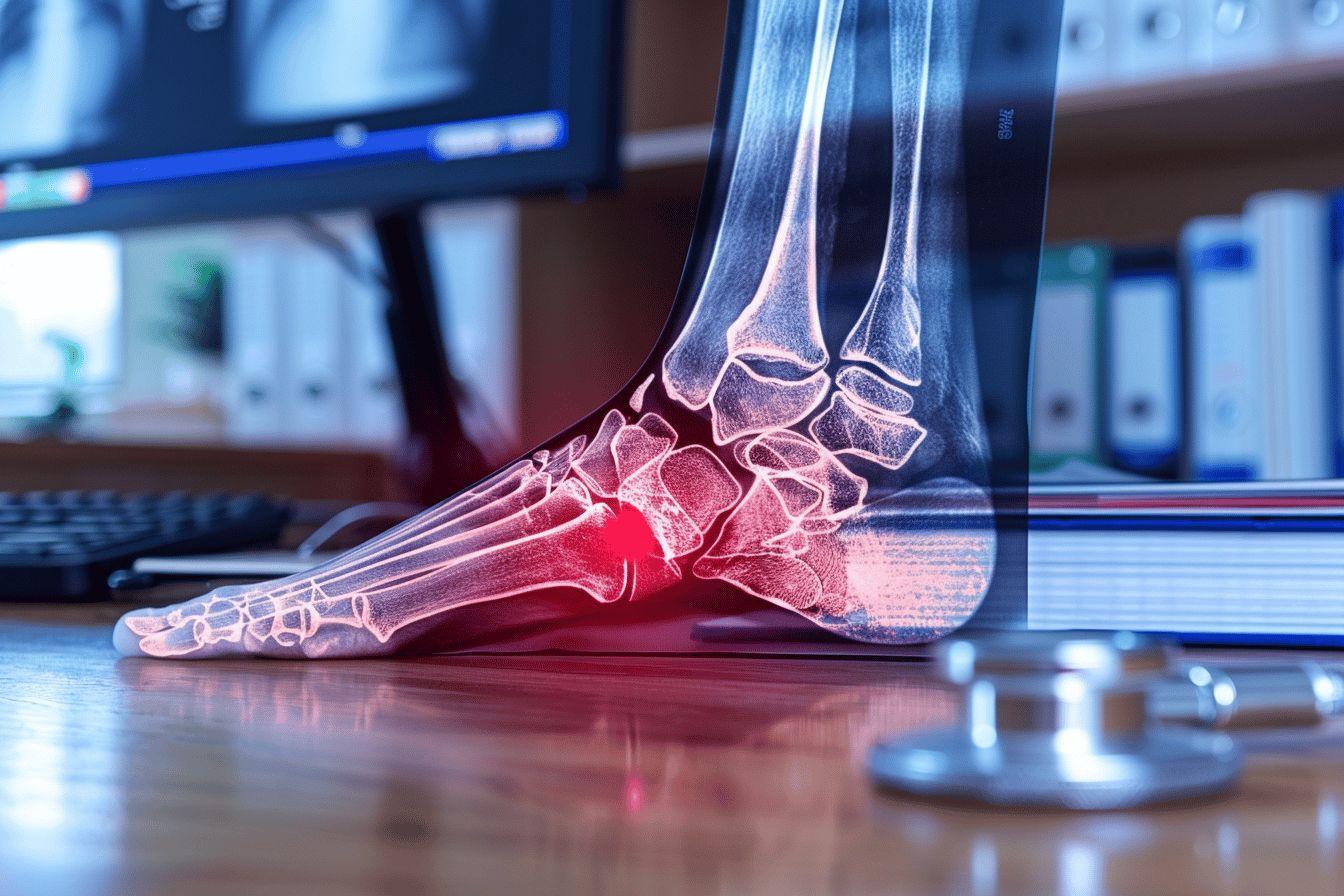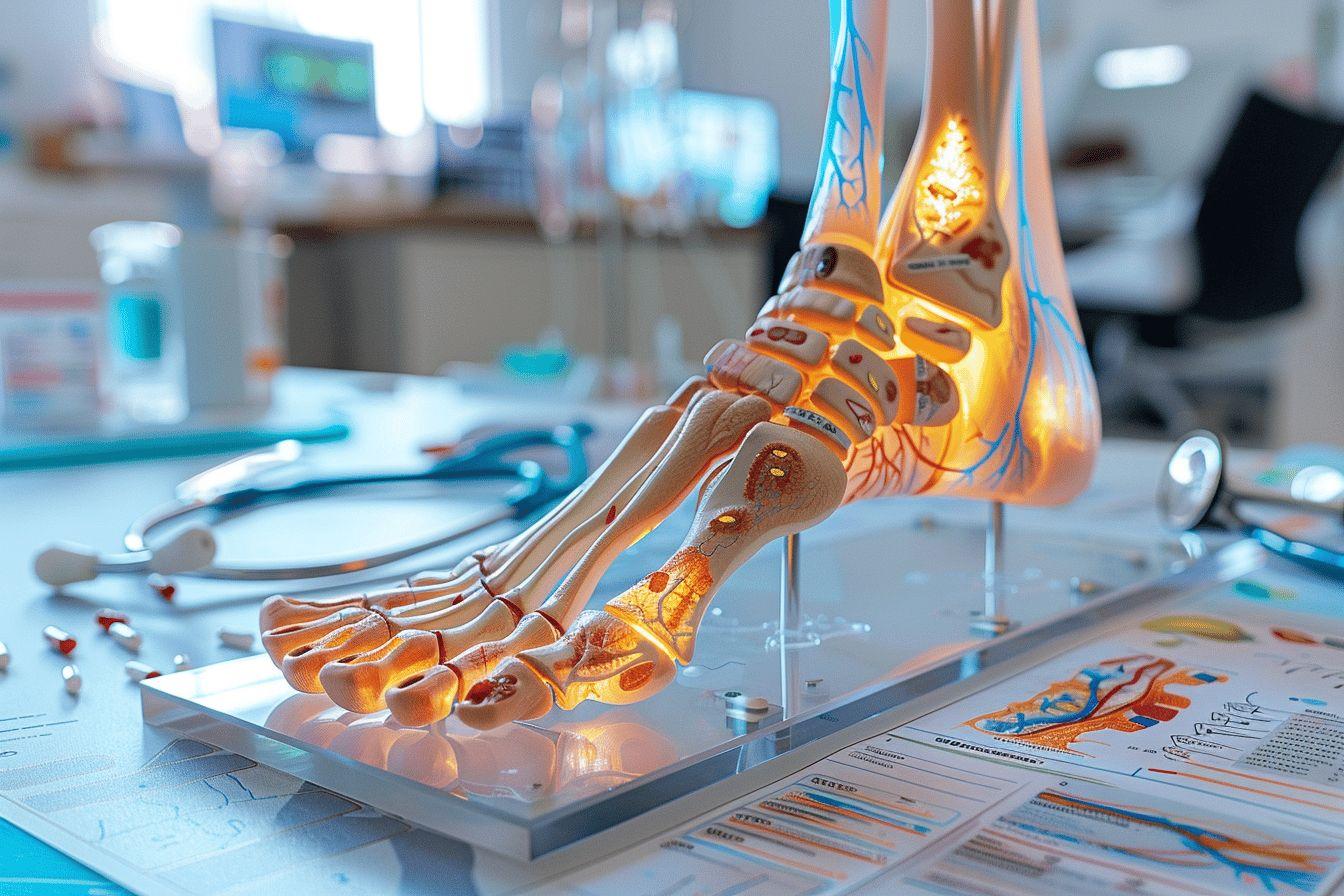Morton's neuroma, a painful foot condition, presents with characteristic symptoms and requires a precise diagnosis. Here are the key points to remember:
- Key Symptoms: Sharp pain between the toes, a feeling of stepping on a rock, numbness and tingling
- Risk Factors: Unsuitable footwear, certain sports, anatomical abnormalities of the foot
- Diagnosis: Clinical examination, medical imaging (ultrasound, MRI), neurological tests
- Preventive Actions: Change shoes, apply ice, gently massage the affected area
Do you feel a stabbing pain under your toes when you walk? You may be wondering if you have a Morton's neuroma. This condition, which affects the nerve between the metatarsals, can significantly affect your quality of life. Fortunately, there are ways to detect and diagnose this problem. Let's examine the telltale signs and steps to confirm the presence of a Morton's neuroma.
Identifying the characteristic symptoms of Morton's neuroma
Morton's neuroma presents with specific symptoms that are important to recognize. Pain is usually the most obvious sign, but it is often accompanied by other unpleasant sensations. Here are the main signs to look out for:
- A sharp pain between the toes, often described as burning or throbbing
- A sensation like stepping on a pebble or a crease in a sock
- A numbness of the toes, particularly between the third and fourth toes
- Tingling or prickling in the ball of the foot
- Pain worsened when wearing narrow or high-heeled shoes
It's worth noting that these symptoms usually intensify over time. At first, the discomfort may be intermittent, but it tends to become more frequent and intense if the problem is left untreated. Some people even report hearing a "clicking" sound when walking, a sign of the inflamed nerve rubbing against the surrounding tissue.
The location of the pain is an important clue. Morton's neuroma most commonly affects the space between the third and fourth toes, although it can sometimes develop between the second and third. If you experience severe pain in this specific area, especially when walking barefoot on a hard surface, you may have developed this condition.

Risk Factors and Causes of Morton's Neuroma
Understanding the factors that increase your risk of developing Morton's neuroma can help you determine if you are at risk for developing it. Several factors can contribute to the development of this condition:
| Risk Factor | Impact on Neuroma Development |
|---|---|
| Wearing Unsuitable Shoes | Compression and Irritation of the Nerve |
| Certain Sports Activities | Repeated Microtrauma to the Forefoot |
| Anatomical Abnormalities of the Foot | Increased Pressure on the Interdigital Nerves |
| Age and Sex | More Common in Women Between 40 and 50 years |
Shoe choice plays a crucial role in the development of Morton's neuroma. Shoes with narrow toes or high heels compress the forefoot, which can irritate the nerve and cause it to thicken. Likewise, certain sports like running or tennis, which place a lot of stress on the forefoot, can increase the risk of developing this condition.
People with other foot problems, such as plantar fasciitis or a heel spur, may be more likely to develop Morton's neuroma. These conditions alter the distribution of weight on the foot, which can put additional pressure on the interdigital nerves.
Diagnostic steps to confirm a Morton's neuroma
If you suspect a Morton's neuroma, it is essential to consult a healthcare professional to obtain an accurate diagnosis. The diagnostic process generally involves several steps:
1. Clinical examination: The doctor will begin by examining your foot and asking you about your symptoms. They will apply pressure between your toes to reproduce the characteristic pain. A test called the "Mulder sign" may be performed: the doctor compresses the ball of the foot while pressing on the interdigital space, which can cause an audible clicking sound if a neuroma is present.
2. Medical Imaging: Although Morton's neuroma is often diagnosed based on clinical examination, imaging tests may be necessary to confirm the diagnosis or rule out other conditions. Ultrasound is particularly useful for visualizing soft tissue and can reveal the nerve thickening characteristic of a neuroma. In some cases, an MRI may be recommended for a more detailed image.
3. Additional Tests: In some cases, the doctor may recommend neurological tests to assess nerve function in the foot. These tests can help differentiate Morton's neuroma from other neurological disorders that could cause similar symptoms. Note that differential diagnosis is crucial. Other conditions, such as arthritis, stress fractures, or ligament problems, can present with similar symptoms. That's why a thorough evaluation by a specialist is essential for an accurate diagnosis and an appropriate treatment plan. Once you've identified the potential signs of a Morton's neuroma, it's important to act quickly to relieve your symptoms and prevent the condition from worsening. Here are some steps you can take: Change Your Footwear Habits: Opt for comfortable shoes with ample toe room. Avoid high heels and narrow shoes that compress the forefoot. Orthotic insoles or metatarsal pads can help distribute pressure more evenly across the foot. Apply Ice: Applying ice to the painful area can help reduce inflammation and temporarily relieve pain. Do this for 15 to 20 minutes several times a day, being careful not to apply the ice directly to the skin. Gently massage the affected area: A gentle massage of the forefoot can help relieve pain and improve blood circulation. Use your fingers to gently massage the space between the metatarsals. If these measures are not enough to relieve your symptoms, don't hesitate to consult a podiatrist or orthopedist. These specialists can offer more advanced treatments, such as corticosteroid injections to reduce inflammation, or in more severe cases, consider surgery to remove the neuroma. Finally, recognizing the signs of a Morton's neuroma and acting quickly can help you avoid complications and regain comfortable walking. Pay attention to your body's signals and don't hesitate to consult a healthcare professional if you have any concerns. With early diagnosis and proper treatment, it is entirely possible to overcome this condition and resume your daily activities pain-free.Taking Action on a Suspected Morton's Neuroma





Leave a comment
This site is protected by hCaptcha and the hCaptcha Privacy Policy and Terms of Service apply.